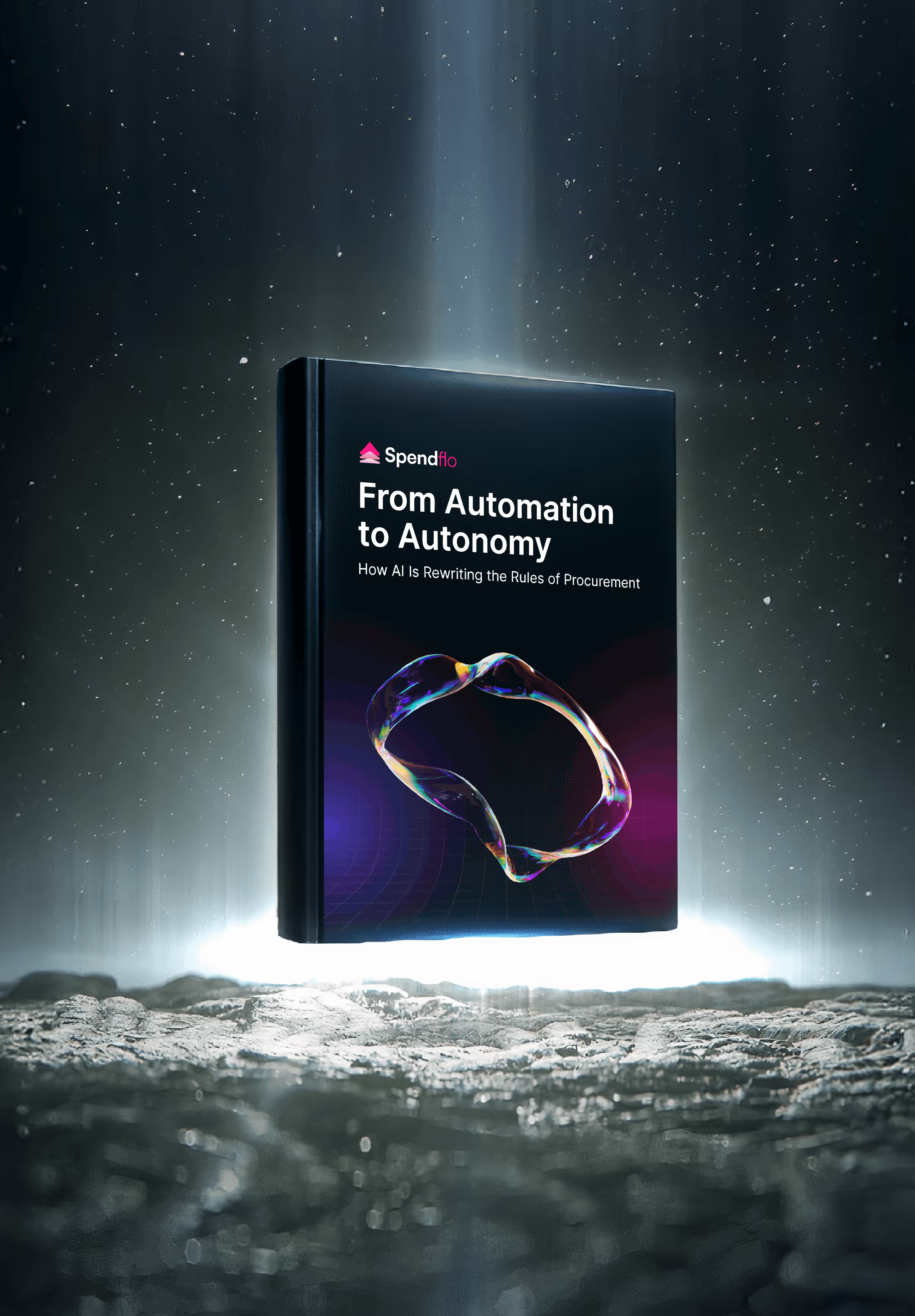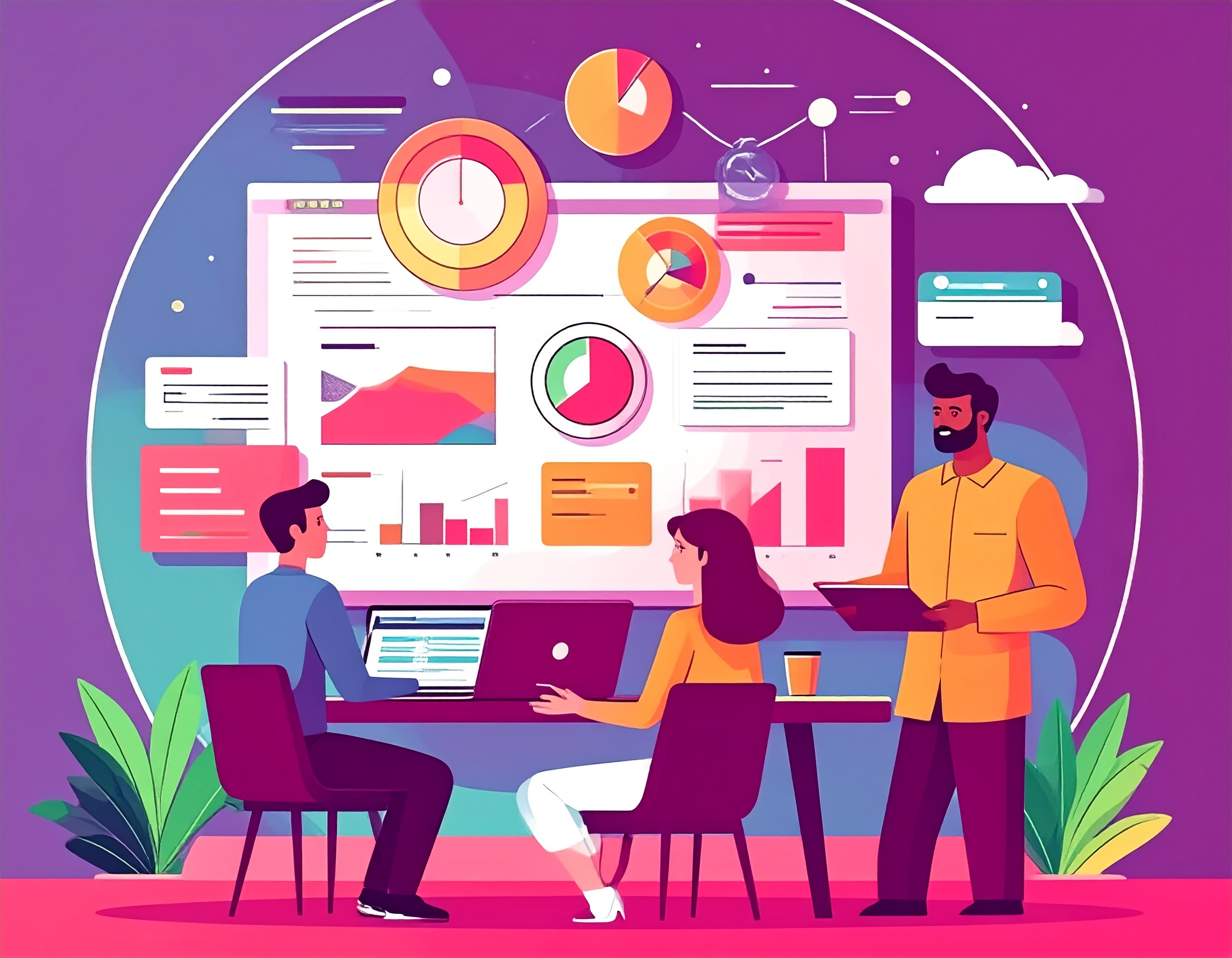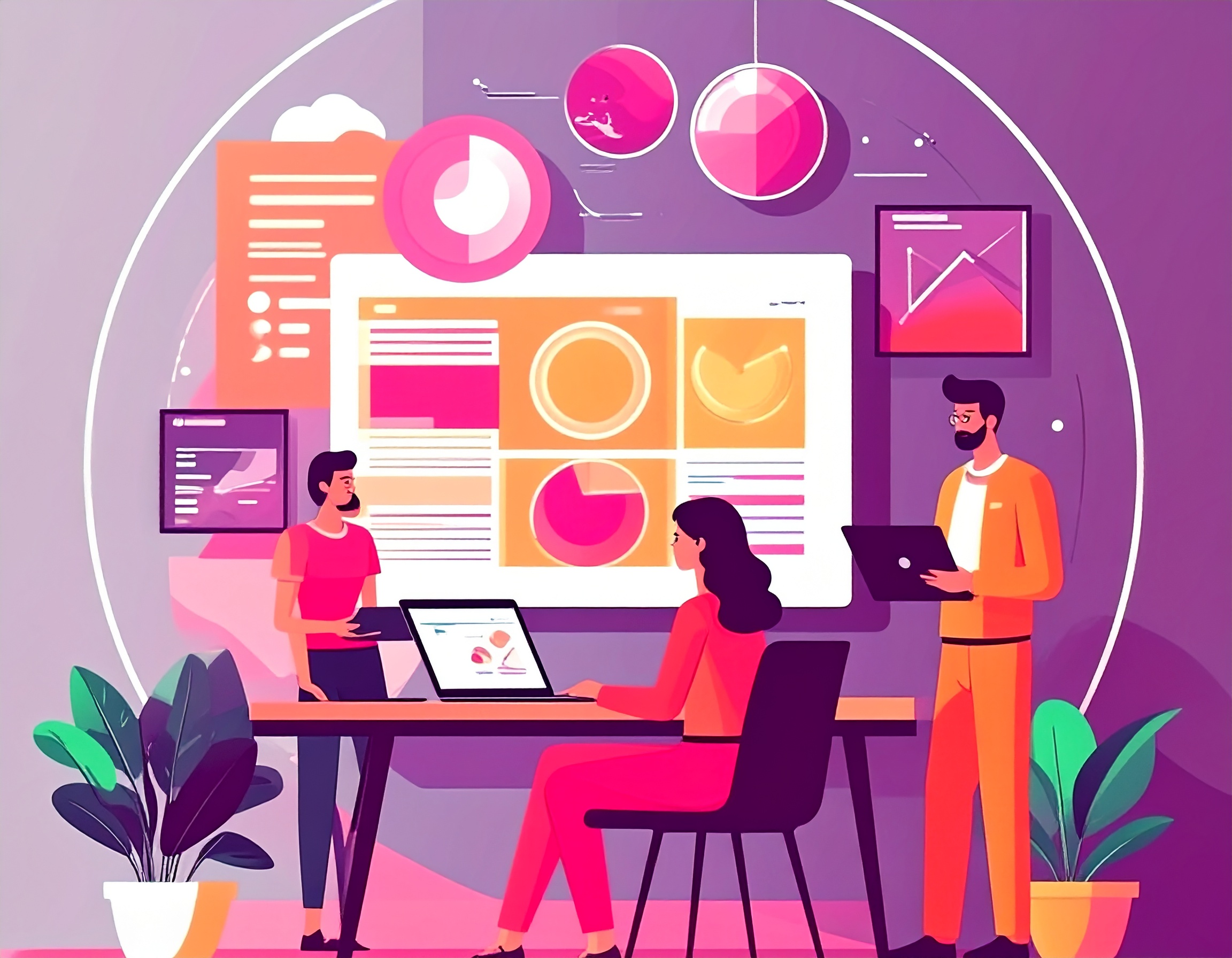

Procure-to-Pay (P2P) Automation: Complete Guide
%20Automation-%20Complete%20Guide.png)
Procure-to-Pay (P2P) Automation: Complete Guide
Learn how automating the procure-to-pay process can improve procurement efficiency, enhance accuracy, reduce costs, and ensure timely vendor payments.
%20Automation-%20Complete%20Guide.png)

Procure-to-pay (P2P) automation is revolutionizing the way businesses manage procurement and payment processes. Automating key steps in procurement can significantly reduce manual workloads, minimize errors, and drive greater operational efficiency. From purchase requisition to vendor payment, P2P automation provides visibility and control over procurement activities, allowing organizations to streamline operations, reduce costs, and ensure compliance with internal and regulatory standards.
What This Blog Covers
- What Is Procure-To-Pay Automation?
- Steps To Automate Your Procure-To-Pay Process
- Benefits Of End-To-End Procure-To-Pay Automation
- What To Look For In Procure-To-Pay Automation Software
- How Spendflo Can Help With Procure-To-Pay Automation
- Frequently Asked Questions On Procure-To-Pay Automation
What is Procure-to-Pay Automation?
Procure-to-pay automation uses software to streamline and automate the entire purchasing and accounts payable process. It integrates procurement tasks, from purchase requests to supplier payments, reducing manual work and errors. This ensures improved accuracy, better efficiency, and stronger financial control.
Procure-to-pay (P2P) is the process of integrating purchasing and accounts payable to streamline procurement workflows. It involves key stages like selecting goods, enforcing compliance, reconciling orders, and processing payments. P2P ensures efficiency, cost control, and alignment with procurement goals.
By integrating procurement data into one centralized system, businesses can reduce errors, improve approval workflows, and maintain better supplier relationships through timely payments.
How Procure-to-Pay Automation Works
Procure-to-pay automation streamlines the entire purchasing process, from creating purchase requests to processing payments. It replaces manual steps with digital workflows allowing teams to manage requisitions, approvals, purchase orders, and invoices in one system. Automation ensures data flows seamlessly across departments, reduces delays, and eliminates errors. With real-time tracking and integrations, businesses gain full visibility and control over their procurement and payment cycles.
Steps To Automate Your Procure-To-Pay Process
The automation of P2P processes involves several key steps. Each step helps businesses optimize procurement, reduce delays, and ensure compliance.
Step 1: Identify Needs & Create Purchase Requests
The first step in automating procure-to-pay is identifying the need for goods or services within the organization. This involves communication between departments to determine what is required. Once identified, a purchase request is created using an automated system that allows users to select predefined templates. This step ensures consistency in purchase requests, reducing errors in specifications or quantities. Automation allows procurement teams to quickly compile, categorize, and track requests, streamlining the initial phase of procurement.
Step 2: Approve Purchase Requisitions
Once the purchase request is submitted, it moves to the requisition approval phase.
Automated workflows direct the requisition to the appropriate approvers based on predefined rules based on budget, department, authorization levels. Automated systems eliminate the need for manual follow-ups, ensuring that requisitions are reviewed promptly. Notifications and alerts keep approvers informed, preventing delays. Approval transparency ensures compliance with procurement policies, reduces bottlenecks, and speeds up the overall process.
Step 3: Generate and Dispatch Purchase Orders
After requisition approval, the system automatically generates a purchase order (PO) with the relevant details such as item description, pricing, quantities, and delivery terms. The automated system ensures that all necessary information is included, minimizing human error. The PO is then sent electronically to the selected vendor. Automation not only saves time but also improves consistency, ensuring that all purchase orders are aligned with the organization’s standards.
Step 4: Manage Goods Receipt
Once the vendor fulfills the order, the next step is receiving and managing the goods. Automated systems record the delivery, ensuring that the items received match the purchase order in terms of quantity and specifications. This step streamlines the receipt process by capturing data in real time and automatically updating inventory records. Automated goods receipt management allows for quick identification of discrepancies, ensuring that any issues are addressed immediately.
Step 5: Handle Invoices & Implement Three-Way Matching
Invoice management is an essential part of procure-to-pay automation. The system performs a three-way match between the purchase order, goods receipt, and vendor invoice to ensure consistency. Automating this process reduces the risk of overpayment and discrepancies. The system flags any mismatches between the three documents, preventing payments for goods not received or incorrect charges. This step also accelerates invoice approvals, improving cash flow management.
Step 6: Process Vendor Payments
The final step in the process is automating vendor payments. Once invoices are approved, the system schedules payments based on vendor terms. Automated payment processing ensures timely transactions, eliminating the risk of late fees. Payments can be prioritized, ensuring that key suppliers are paid first to maintain strong relationships. This step improves cash flow by optimizing when and how payments are made, and it also ensures compliance with payment terms and contracts.
Benefits of End-to-end Procure-to-pay Automation
Automating the entire P2P process delivers a host of benefits, enhancing both operational efficiency and financial performance. Here are some notable benefits:
%20Automation-%20Complete%20Guide%202.png)
Faster Procurement Cycles
Manual processes can cause delays due to slow approval cycles. Automating requisition approvals, purchase orders, and payments reduces bottlenecks, and ensures that procurement activities are completed faster. With automated workflows, orders are processed quickly, ensuring timely delivery of goods and services while enhancing operational efficiency.
Cost Reduction
P2P automation reduces administrative overhead by eliminating manual data entry and
streamlining communication with suppliers. This leads to lower processing costs and helps businesses manage their budgets more effectively. Automated systems also improve spend visibility, enabling businesses to identify opportunities for cost reduction, negotiate better terms, and avoid unnecessary purchases.
Enhanced Accuracy
Manual processes are prone to errors, such as incorrect data entry, duplicate payments, or misfiled invoices. Automating these tasks reduces the risk of human errors, ensuring that procurement data is accurate and reliable. Automated matching of purchase orders, invoices, and goods receipts ensures that businesses only pay for the goods and services they receive, reducing the risk of overpayments.
Improved Compliance
P2P automation systems help businesses enforce procurement policies and ensure compliance with regulatory requirements. Automated processes ensure that procurement activities are transparent, traceable, and auditable. By digitizing and centralizing procurement data, businesses can easily access the records they need for audits and ensure compliance with industry regulations and internal guidelines.
Stronger Supplier Relationships
Timely payments are important for maintaining strong supplier relationships. P2P automation ensures that invoices are processed and paid on time, reducing the risk of late fees and enhancing supplier loyalty. With automated vendor performance tracking, businesses can monitor suppliers’ reliability and adjust procurement strategies accordingly.
Better Cash Flow Management
By automating payment processing and scheduling, businesses can optimize cash flow.
Automated systems allow companies to manage payment priorities and ensure that cash is available when needed. Automated alerts and notifications ensure that finance teams stay informed about upcoming payments and can plan their cash flow more effectively.
What To Look For In Procure-To-Pay Automation Software
Selecting the right P2P automation software is crucial to achieving efficiency and ensuring seamless operations. Here are the key factors to consider:
System Integration
The software should integrate seamlessly with your existing ERP and financial systems,
ensuring smooth data flow between procurement and other business functions. Integration prevents data duplication of data, reduces errors, and ensures that procurement data is updated in real-time across all systems.
Customization and Scalability
Look for software that can be customized to match your specific procurement workflows and approval processes. The software should be flexible enough to meet the unique needs of your business. Scalability is important for growing businesses. The system should be able to handle increasing volumes of procurement activities as your business expands.
User-Friendly Interface
A user-friendly interface ensures quick adoption by employees across departments. The system should be easy to navigate and require minimal training for new users. A simple, intuitive design reduces the time needed to complete procurement tasks and improves overall efficiency. Additionally, a well-designed interface enhances user satisfaction, reduces the chances of errors, and boosts productivity across teams.
Advanced Analytics and Reporting
Real-time reporting and data analytics capabilities allow businesses to monitor procurement activities, track spending patterns, and assess vendor performance. These insights provide the ability for companies to spot trends and potential risks before they escalate. Robust analytics tools help businesses make data-driven decisions, identify areas for improvement, and optimize procurement strategies.
Security and Compliance
Ensure that the software adheres to industry-standard security protocols to protect sensitive financial and procurement data. It should include encryption and multi-factor authentication for enhanced protection. The software should also offer built-in compliance features that ensure procurement activities align with internal policies and external regulations.
Vendor Support and Training
Choose a vendor that offers reliable customer support, regular software updates, and comprehensive training resources. Look for vendors that provide 24/7 assistance to resolve critical issues promptly. This ensures that your team can maximize the value of the software and troubleshoot issues when necessary.
How Spendflo Can Help With Procure-To-Pay Automation
Spendflo is a robust P2P automation solution designed to streamline procurement processes and enhance cost efficiency. Spendflo automates key steps in the procurement lifecycle, from purchase requisitions to vendor payments, providing businesses with complete control and visibility.
Here’s how Spendflo can help:
Automated Approval Workflows: Spendflo enables you to automate approval workflows, ensuring that requisitions, purchase orders, and payments are approved quickly and efficiently. This reduces bottlenecks and ensures timely procurement activities.
Real-Time Spend Visibility: Gain insights into your procurement activities with Spendflo’s real-time data and reporting features. This allows you to track spending, monitor vendor performance, and make data-driven decisions to optimize procurement.
Compliance and Risk Management: Spendflo helps you stay compliant with procurement policies and external regulations by providing automated checks and balances. This reduces risk of non-compliance and helps you manage procurement-related risks effectively.
By leveraging Spendflo, businesses can automate their procure-to-pay processes, reduce costs, improve vendor relationships, and ensure compliance with ease.
Conclusion
Procure-to-pay automation is a game changer for businesses looking to streamline procurement, reduce costs, and enhance operational efficiency. By automating key steps such as requisition approval, purchase order creation, invoice matching, and payments processing. This way, businesses can gain greater control over procurement activities and ensure compliance. With the right P2P automation software, companies can unlock significant benefits, including faster procurement cycles, improved accuracy, and better cash flow management. Implementing P2P automation with a platform like Spendflo ensures a seamless and efficient procurement process that drives long-term business growth.
Frequently Asked Questions On Procure-To-Pay Automation
1.What advantages does automating the procure-to-pay process offer?
Procure-to-pay automation offers numerous benefits like faster procurement cycles, reduced operational costs, and improves accuracy. By automating tasks such as requisition approval, invoice matching, and payments processing, businesses can reduce manual errors, ensure compliance, and gain real-time visibility into procurement activities. This helps optimize spending, strengthens supplier relationships, and enhances overall operational efficiency.
2. How do I implement P2P automation in my business?
Implementing P2P automation starts with selecting the right P2P software that meets your specific procurement needs. You’ll need to integrate the software with existing ERP systems and customize workflows based on your business processes. Once implemented, the automation system will handle key functions such as requisition approvals, purchase order creation, and invoice processing. All this allows your business to streamline your procurement and improve efficiency.
3. What challenges might I face when automating procure-to-pay processes?
Common challenges include integrating the new system with legacy software, ensuring employee adoption, and addressing resistance to change. Some businesses may also face difficulties in automating highly customized workflows. Clear communication, proper training, and involving key stakeholders in the implementation process can help overcome these challenges and ensure a smooth transition to automation.
4. How does P2P automation improve cash flow management?
P2P automation improves cash flow management by ensuring that payments are processed on time and according to predefined schedules. Automated systems can prioritize payments based on vendor terms, helping businesses avoid late fees and optimize cash reserves. Additionally, real-time alerts and reports enable finance teams to track upcoming payments and make
informed cash flow decisions.
5. What should I consider when selecting P2P automation software?
When selecting P2P automation software, consider factors such as system integration, customization, user-friendliness, scalability, and security features. Ensure that the software can integrate with your existing ERP systems and provides real-time analytics and reporting. The solution should also be scalable to accommodate future growth and provide strong security measures to protect sensitive procurement data.
6.What is Procure-to-Pay Automation?
Procure-to-pay (P2P) automation streamlines procurement by automating stages from requisition to payment. It removes manual tasks, improves accuracy, and provides real-time tracking. This ensures seamless completion of purchase orders, supplier management, and payments.
7. Who benefits from procure-to-pay automation?
Procure-to-pay automation benefits invoice clerks, accounts payable teams, vendor managers, and purchasing teams by reducing manual workloads, improving accuracy, and speeding up tasks like invoice processing, vendor onboarding, and purchase order creation.
8. How can procure-to-pay automation help your business?
P2P automation improves collaboration, reduces errors, and ensures better cash flow. It helps streamline procurement, boost employee efficiency, consolidate data, and control spend across departments - leading to improved accuracy and faster decision-making.
9. Which technology is used to automate the procure-to-pay process?
Technologies like AI, machine learning, OCR, and robotic process automation (RPA) are used to automate procure-to-pay. These tools reduce repetitive tasks, improve accuracy, and streamline invoice processing, vendor data entry, and approvals.
10. S2P vs. P2P: Which is better for my business?
Source-to-pay (S2P) goes beyond procure-to-pay (P2P) by including supplier sourcing and bidding. If you need to manage supplier selection and negotiation, S2P may be ideal. For streamlined procurement and payments, P2P works well.
11. Can procure-to-pay automation integrate with our existing ERP system?
Yes, P2P automation integrates seamlessly with most ERP systems. This centralizes procurement data, improves accuracy, streamlines workflows, and provides real-time access to purchase and payment information across the business.
12. What processes are improved by procure-to-pay automation?
Automation enhances requisition approvals, purchase order generation, invoice matching, vendor management, and payment scheduling. It eliminates delays, reduces manual errors, and gives finance and procurement teams better visibility and control.










.png)




.png)










.avif)


